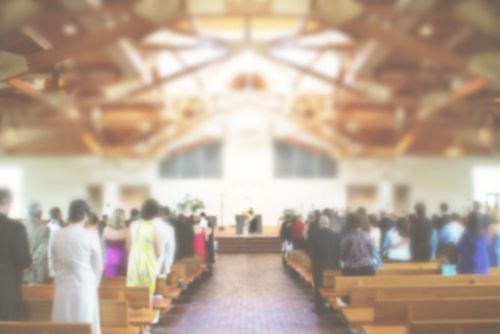 Many faith communities have cherished traditions and creeds, and these established habits are often considered an important part of their stories. Unfortunately, the way you usually do things may be a deterrent to people who are seeking a church home. Gender inclusivity is a way to extend hospitality to all people, regardless of how they identify. With a few basic changes in your services, your church can communicate that it recognizes the need to be gender inclusive and is willing to do the work. The following questions can help you pinpoint where adjustments are needed.
Many faith communities have cherished traditions and creeds, and these established habits are often considered an important part of their stories. Unfortunately, the way you usually do things may be a deterrent to people who are seeking a church home. Gender inclusivity is a way to extend hospitality to all people, regardless of how they identify. With a few basic changes in your services, your church can communicate that it recognizes the need to be gender inclusive and is willing to do the work. The following questions can help you pinpoint where adjustments are needed.
How Do You Greet People?
It doesn't take long for those who are looking for an inclusive community to determine what your values are. For example, addressing the congregation as "brothers and sisters" may seem comforting to those who identify within those two categories, but it excludes anyone who does not. Using terms such as "folks" or "beloved ones" is more likely to be equally welcoming to everyone.
There are a few simple ways you can increase gender inclusion before the service even begins:
- Including a space for personal pronouns on name tags
- Encouraging members to introduce themselves with their pronouns
- Using personal pronouns of worship leaders in the bulletin
You may encounter a little hesitation from some members. It is not uncommon for cisgender people to view discussion of their personal pronouns as unnecessary, as they have the privilege of not typically having to worry that they will be misgendered during social interactions. However, something as easy as these implicit acknowledgements that gender should never just be an assumption can go a long way toward helping trans or non-binary members and visitors feel welcome and seen.
What Language Do Your Songs or Liturgies Use?
Greetings and casual conversations are not the only places where exclusive language hides. The hymns and liturgies of many denominations are steeped in the patriarchal language of the time in which they were written. If you have the means to do so, consider replacing your hymnals with a more updated version. Encourage your worship leaders to identify language that can be easily adjusted and project the adapted lyrics on a screen. Make a point to choose new songs that are inclusive. The more effort you make to ensure that the language used in the service itself encompasses as many people as possible, the more welcome everyone is likely to feel.
How Do You Talk About God?
There are many masculine metaphors for God in religious traditions. The references to a deity as king and father are meant to help people understand the nature of God, but if these are the only images your church uses to do so, it may be hard for those who don't identify as male to relate. Incorporating other metaphors, such as mother, nurturer, parent or leader, can bridge the gender gap and expand the understanding of a divine being whose image everyone present can reflect.
Who Is Represented?
Gender inclusivity is not just about what you say but also what you do. Analyze your service layout. Do you have people other than cisgender men leading and serving? Does your denomination affirm pastors who are women? Even if your pastor is male, you can still have women or non-binary persons who assist, pray and direct the musicians. No matter where they fall on the gender spectrum, members of the congregation should be able to see themselves represented in the community's leadership.
Moving toward more gender-inclusive services is an important step for communities who are looking for ways to expand their hospitality efforts. It may feel awkward for some people at first, but the benefits of including those who have historically been left out more than make up for the temporary discomfort.



